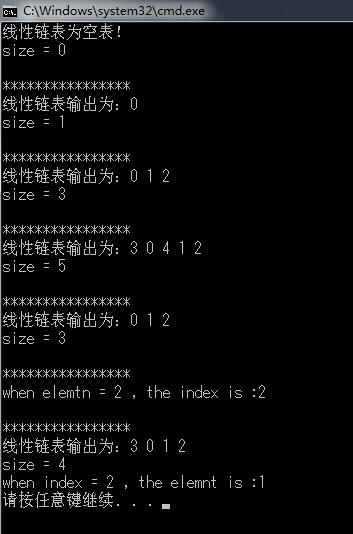筆記五:線性表——單鏈表表示
阿新 • • 發佈:2018-12-25
線性連結串列
注意: firstnode指的就是第一個節點,而不是一個指向第一個節點的指標。
程式碼:
#include<iostream>
using namespace std;
template<typename T>
struct chainNode
{
T element;
chainNode* next;
chainNode() {};
chainNode(const T& element) { this->element = element; };
chainNode(const T& element, chainNode<T>* next) { this 執行:

